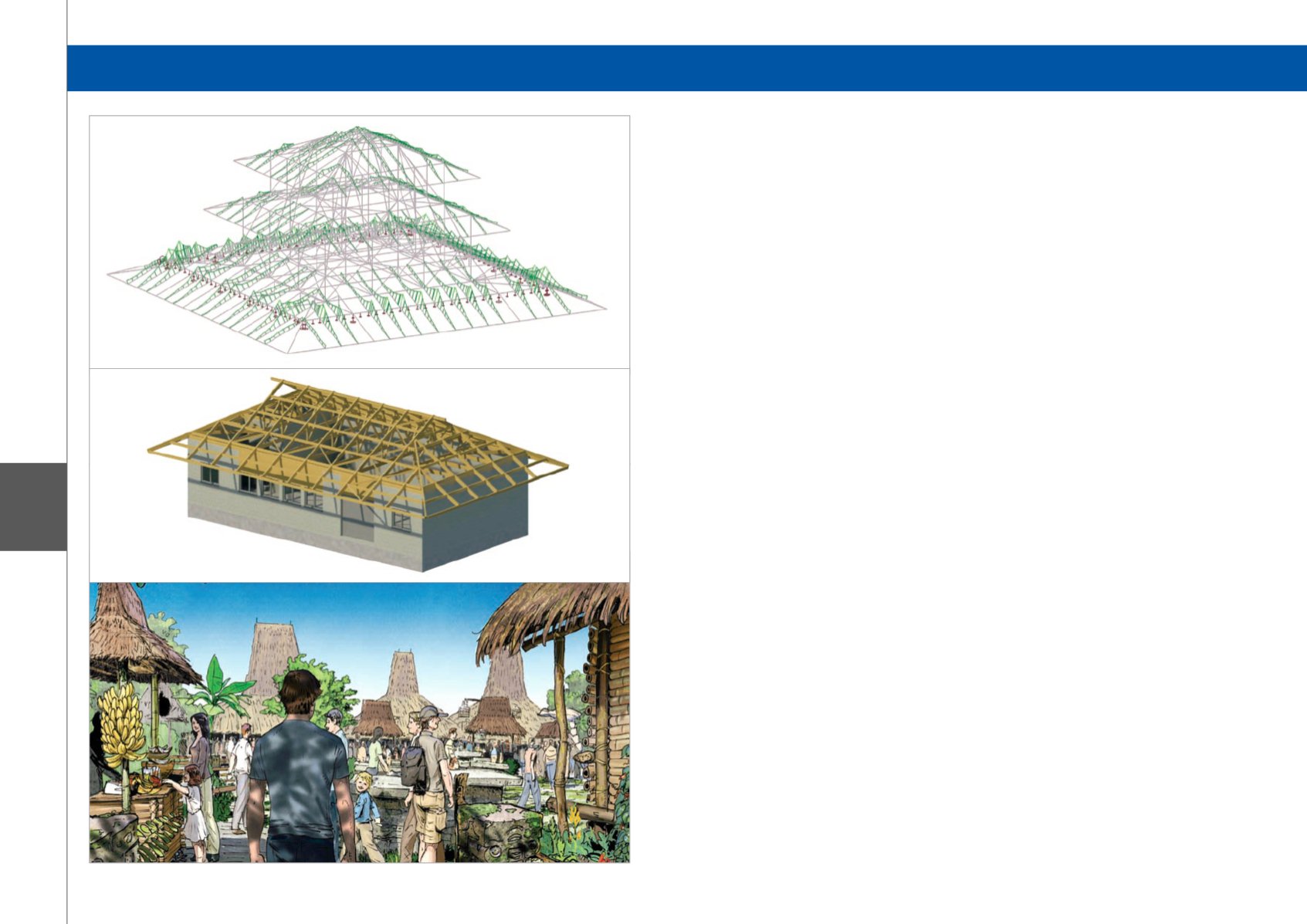
218
X4
Category 4: Special Projects
Software: Scia Engineer
Chester Zoo “Islands” - Chester, United Kingdom
Project background
Chester Zoo is located in the north of England and is
the most visited wildlife attraction in Britain, with around
1.4 million visitors per year. As part of the zoo’s Natural
Vision Masterplan, it is in the process of creating
one of the largest zoo developments in Europe. The
new attraction, known as ‘Islands’, will showcase the
zoo’s international conservation work and take visitors
on a journey to the south-east Asian islands of the
Phillippines, Papua New Guinea, Bali, Sumatra, Sumba
and Sulawesi, immersing them in the sights, sounds
and smells of these diverse and exotic cultures. Work
on site is expected to begin in 2013 and be completed
ahead of the 2015 summer season.
Structural design brief
The project required the design of a number of
themed animal and visitor facilities, each reflecting
the vernacular architecture of the island from which
they originated. The main challenge of this project was
therefore to devise cost-effective structural forms which
retained the appearance and character of the traditional
buildings (typically constructed using relatively primitive
techniques) whilst satisfying the requirements of modern
structural design codes and building regulations.
The intricate roof structures found on the islands of
south-east Asia have been replicated using pitched
timber roofs clad with artificial thatch or corrugated
metal sheeting, with the walls of each structure typically
featuring a co-ordinated palette of bamboo or timber
rainscreen cladding. Since the design brief required
that the internal space of each building be column-free
where possible, a series of timber trusses have been
integrated into the roof structures, allowing loads to be
distributed to the supporting perimeter blockwork walls.
Use of Scia Engineer
The primary advantage of using Scia Engineer for this
project was that it allowed the modelling, analysis and
design of complex three-dimensional roof geometries
which would have been difficult and time-consuming
to assess by hand calculation. The roof structures
were modelled as three-dimensional frames formed of
one-dimensional beam elements, and assessed for a
variety of permanent and variable loads, making use
of Scia Engineer’s ability to generate relevant load
combinations according to BS EN 1990 (Eurocode 0)
and BS EN 1991 (Eurocode 1).
The design process also made extensive use of the new
timber module in Scia Engineer, which allowed the rapid
sizing and checking of members at both the ultimate
and serviceability limit state according to BS EN 1995
(Eurocode 5). The ability to easily extract support
reactions from the roof models saved considerable
calculation effort and time when designing other aspects
of the structures outside Scia Engineer, such as the
supporting walls and foundations.
Finally, by exporting the analytical models from Scia
Engineer to Autodesk Revit, the design intent for each
structure could be clearly communicated to AECOM’s
CAD technicians and provided a basis from which they
could construct physical models of the buildings.


